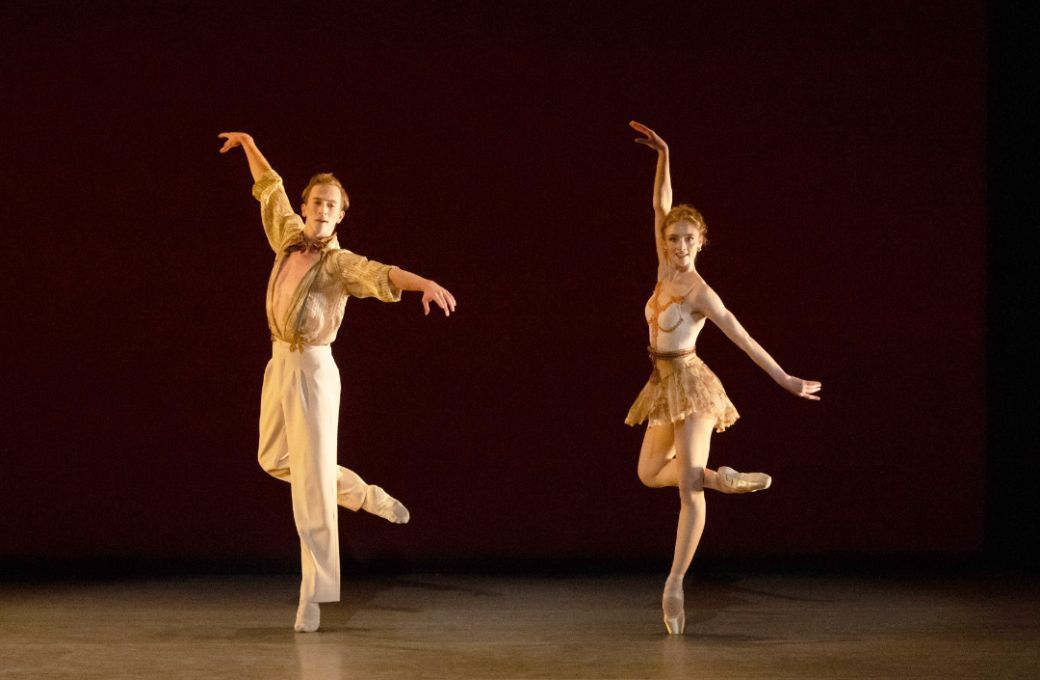American Ballet Theatre kicked off its annual fall season with a tribute to one of their most prestigious legacy choreographers, Twyla Tharp. Tharp at one point was considered avante-garde with her fusion of modern dance, pop and ballet. Today, she is an elderly woman whose works are considered classics. Nevertheless, her masterpieces still haven't lost their freshness.

A program of all Tharp risks redundancy. Despite her incredible craftsmanship, Tharp has a tendency to return to the same themes and motifs, to the point where it can become a cliché. Susan Jaffe did a great job curating this program so there was enough contrast between the ballets.
Sextet, the first piece of the program, was oddly my favorite. I say “oddly” because most of the people I spoke to disliked Sextet. I thought it was fun. Three couples danced to a mix of tango and Roma-inspired folk dances. The Santo Loquasto costumes and overall feel of the piece reminded me of Balanchine’s Errante/Tzigane. The three couples also resemble Tharp’s Nine Sinatra Songs in structure.
My only quibble with Sextet was I didn’t feel like Joseph Markey had quite enough charisma for the lead couple. Catherine Hurlin possessed that quality in spades, but she was working alone. The other two couples had more sensuality, more duende: Jake Roxander and Skylar Brandt have great chemistry and pizzazz, while Daniel Camargo and Breanne Granlund were fun and flirtatious. I loved the way Tharp circled the couples in and out. It did go on a little too long.
Bach Partita was the piece everyone loved. Everyone but me. I’ve found that the more profound the music, the more Tharp sometimes flounders. Deuce Coupe, set to Beach Boys tunes? Amazing. But Diabelli, set to Beethoven’s Diabelli Variations? Defeated by the music. I thought Bach Partita was Tharp’s attempt to imitate Balanchine’s Concerto Barocco or Robbins’ Goldberg Variations. It seemed self-consciously austere and like a classroom exercise, and without Tharp’s usual wit and ability to create a crescendo of dance. I enjoyed seeing the shapes Chloe Misseldine made with her long legs and tapered feet, but this piece just didn’t speak to me.
On the other hand, I loved Push Comes to Shove. It has one of Tharp’s favorite conceits: ballet meets pop. In this case, a vaudeville dancer (Isaac Hernandez in the role originated on Mikhail Baryshnikov) somehow wanders into a classical ballet company. You can probably guess what happens: the vaudeville dancer teaches the ballet company about jazz (the ballerinas wear bowler hats by the end), and the ballerinas teach the vaudeville dancer about fifth position. It ends with the vaudeville dancer flying around the stage in saut de basques while the classical ballerinas get jiggy with it.
Isaac Hernandez is a very different dancer than Mikhail Baryshnikov. Baryshnikov was a tiny dynamo, and Tharp wanted to show that this Vaganova-trained dancer and classical purist could also absorb American idioms. Hernandez is a more modest, introverted dancer. Nevertheless, he gave a charming, winsome performance and he managed the jazzy hip rolls and shoulder shrugs well. I do think that Jake Roxander (the second cast, which I’m seeing next week) might be better at selling the piece to audiences. Hernandez is too understated. I also really enjoyed Christine Shevchenko and Breanne Granlund in the Martine van Hamel and Marianna Tcherkassky roles. Both of them sold the illusion of “learning” how to jazz it up convincingly. And they look great in bowler hats.
The program was overall a triumph though not just for Tharp, who came out for a rapturous solo curtain call, but for Susan Jaffe’s vision of ABT. Jaffe is doing an amazing job balancing ABT’s legacy with new works and I believe in her vision for the company.


